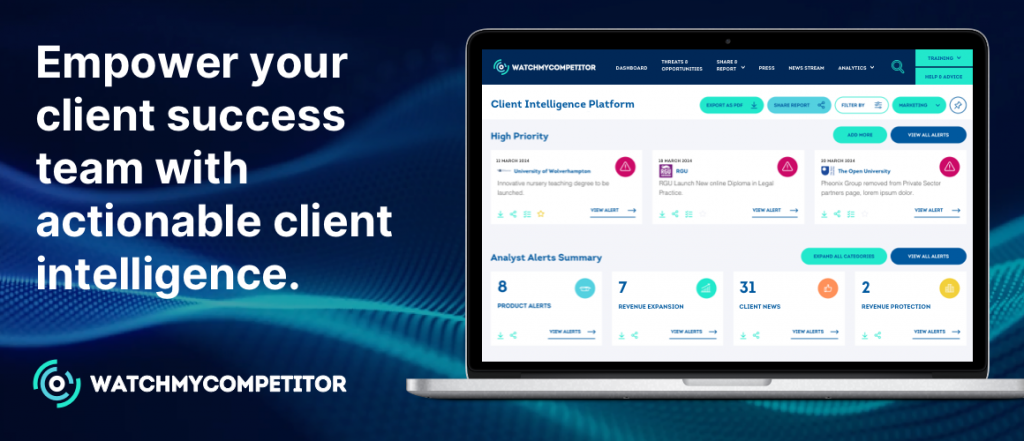In today’s competitive marketplace, where customer loyalty can make or break a business, effective client monitoring has transcended from a luxury to an absolute necessity.
As businesses strive to foster stronger relationships, anticipate client needs, and drive growth, the strategic gathering and utilisation of client data has become a cornerstone of sustainable success.
This guide explores the essential aspects of client monitoring in 2024. We’ll explore the key components to monitor, the best tools available, and how to transform monitoring data into actionable strategies.
Additionally, we’ll provide a step-by-step framework to build a robust client monitoring program tailored to your specific needs.

Why You Should Actively Monitor Clients
Understanding your clients’ needs and experiences is crucial for building long-term success. Client monitoring offers a systematic approach to achieve this. By regularly measuring specific data points and client interactions, you gain valuable insights into:
A) Client satisfaction
When you monitor client sentiment through surveys, reviews, and support tickets helps gauge overall satisfaction and identify areas for improvement.
B) Engagement levels
Tracking user activity on your platform, website, or application reveals how clients interact with your offerings and pinpoints areas for enhanced engagement.
C) Performance metrics
Monitoring key performance indicators (KPIs) helps assess the effectiveness of your services and identify areas where you can provide even greater value to clients.
D) Early warning signs
Proactive monitoring can detect potential churn risks by spotting changes in client behaviour, allowing you to intervene and address concerns before they escalate.
Investing in an effective way to monitor clients demonstrates your commitment to building strong partnerships. It fosters transparency and trust, ultimately leading to increased client retention and advocacy.
Key Components of Client Monitoring
Knowing what to monitor is just as important as how to monitor it. Here are some key aspects to consider when looking to monitor clients:
Client feedback: Actively solicit feedback through surveys, Net Promoter Scores (NPS), and direct communication channels. This provides valuable insights into client satisfaction and experience.
Contract performance: Monitor progress towards agreed-upon deliverables and KPIs. Identify potential delays or roadblocks proactively and implement solutions to ensure client success.
Engagement & activity: Track user activity on your platform, application, or website. Analyse usage patterns to see how clients are interacting with your services and identify areas for improvement.
Support ticket volume & trends: Monitor the volume and nature of support tickets to understand client pain points and identify recurring issues requiring attention.
Social media sentiment: Monitor online conversations about your brand and client experiences. Identify potential concerns and address them quickly.

Important Client Monitoring Tools To Consider
The technological landscape offers a wealth of tools to streamline and enhance your efforts to monitor clients. Here’s a look at some of the best options:
- Customer relationship management (CRM) systems: CRMs provide a centralised platform to manage and track client interactions, activities, and performance metrics.
- Data analytics platforms: These platforms enable you to collect, organise, and analyse vast sets of client data, providing valuable insights into trends and patterns.
- Social listening tools: Monitor brand mentions and client sentiment across various social media platforms.
- Project management software: Manage projects efficiently and collaboratively while keeping clients informed of progress and milestones achieved.
- Surveys & feedback tools: These platforms facilitate the creation and distribution of surveys and feedback forms, gathering valuable client insights.
Using Client Intelligence Platform For Monitoring
WatchMyCompetitor stands out as a comprehensive client intelligence platform that offers valuable functionalities for client monitoring as well. Here’s how it works:

1) Client sentiment analysis
WatchMyCompetitor goes beyond traditional competitor tracking by incorporating social media listening features. This allows you to monitor online conversations about your brand and client experiences, providing insights into client sentiment and potential areas of concern.
2) Benchmarking
Identify industry best practices and compare your client engagement metrics against them. This sheds light on how your performance stacks up and helps you identify areas for improvement.
3) Competitive landscape insights
Gain valuable insights into your clients’ online presence and how they interact with your competitors. This knowledge empowers you to tailor your offerings and communication strategies to better serve your clients’ needs.
By integrating WatchMyCompetitor with your existing client monitoring tools, you gain a holistic view of the client landscape, allowing you to proactively address client needs and stay ahead of the curve.
Why You Should Actively Monitor Clients
Understanding your clients’ needs and experiences is crucial for building long-term success. Client monitoring offers a systematic approach to achieve this. By regularly measuring specific data points and client interactions, you gain valuable insights into:
Client satisfaction: When you monitor client sentiment through surveys, reviews, and support tickets helps gauge overall satisfaction and identify areas for improvement.
Engagement levels: Tracking user activity on your platform, website, or application reveals how clients interact with your offerings and pinpoints areas for enhanced engagement.
Performance metrics: Monitoring key performance indicators (KPIs) helps assess the effectiveness of your services and identify areas where you can provide even greater value to clients.
Early warning signs: Proactive monitoring can detect potential churn risks by spotting changes in client behaviour, allowing you to intervene and address concerns before they escalate.
Investing in an effective way to monitor clients demonstrates your commitment to building strong partnerships. It fosters transparency and trust, ultimately leading to increased client retention and advocacy.
Actionable Insights Through Client Monitoring
Knowing what to monitor is just as important as how to monitor it. Here are some key aspects to consider when looking to monitor clients:
1) Identify trends: Analyse data over time to spot trends in client behaviour, satisfaction, or activity levels.
2) Benchmark performance: Compare your performance against industry benchmarks or your own historical data to identify areas for improvement.
3) Segment your audience: Segment your client base based on demographics, needs, or behaviour to personalise your approach and communication.
4) Predict churn risk: Identify clients at risk of churning by analysing their activity levels and support ticket trends.
5) Develop client personas: Use data to create client personas, representing different segments of your client base, to better understand their specific needs and tailor your communication and offerings accordingly.
Building Your Client Monitoring Framework
Now that we understand the importance of client monitoring and the tools available, let’s build a framework to get started:
A) Define your goals: Clearly define what you want to achieve with client monitoring. Do you seek to improve client satisfaction, increase engagement, or reduce churn? Having clear goals helps guide your monitoring strategy.
B) Identify key metrics: Based on your goals, determine the key metrics you’ll track (such as NPS, website traffic, support ticket volume). Focus on a manageable set of core metrics to avoid data overload.
C) Choose the right tools: Select the tools that best suit your needs and budget. Consider options like CRMs, data analytics platforms, and project management software.
D) Establish data collection methods: Determine how you’ll collect client data. This could involve surveys, website tracking, social media monitoring, and internal client communication platforms.
E) Set up automated reporting: Automate reports to track key metrics and receive regular updates on client performance and engagement.
F) Analyse & act: Regularly analyse your data to identify trends and insights. Develop actionable strategies based on your findings to improve client experience and address any identified issues.
G) Communicate effectively: Share relevant client monitoring data with your team to ensure everyone is aligned on client needs and priorities.
Remember, client monitoring is an ongoing process. Regularly review your framework and adjust your strategies as needed to ensure continued effectiveness.
Final Thoughts
Effective efforts to monitor clients in 2024 are not just about keeping track of numbers; it’s about fostering genuine client relationships. By proactively gathering data and transforming it into actionable insights, businesses can build trust, identify and address client concerns before they escalate, and ultimately drive long-term success.
Invest in building a robust client monitoring framework, and reap the rewards of satisfied, loyal clients who are the backbone of any thriving business.
The rewards of effective client monitoring extend far beyond improved client satisfaction and retention. By understanding your clients better, you gain a deeper understanding of the market and potential opportunities.
This knowledge empowers you to refine your offerings, develop targeted marketing campaigns, and ultimately achieve sustainable growth. Client monitoring is not just a tool for the present; it’s a strategic investment in the future of your business.

